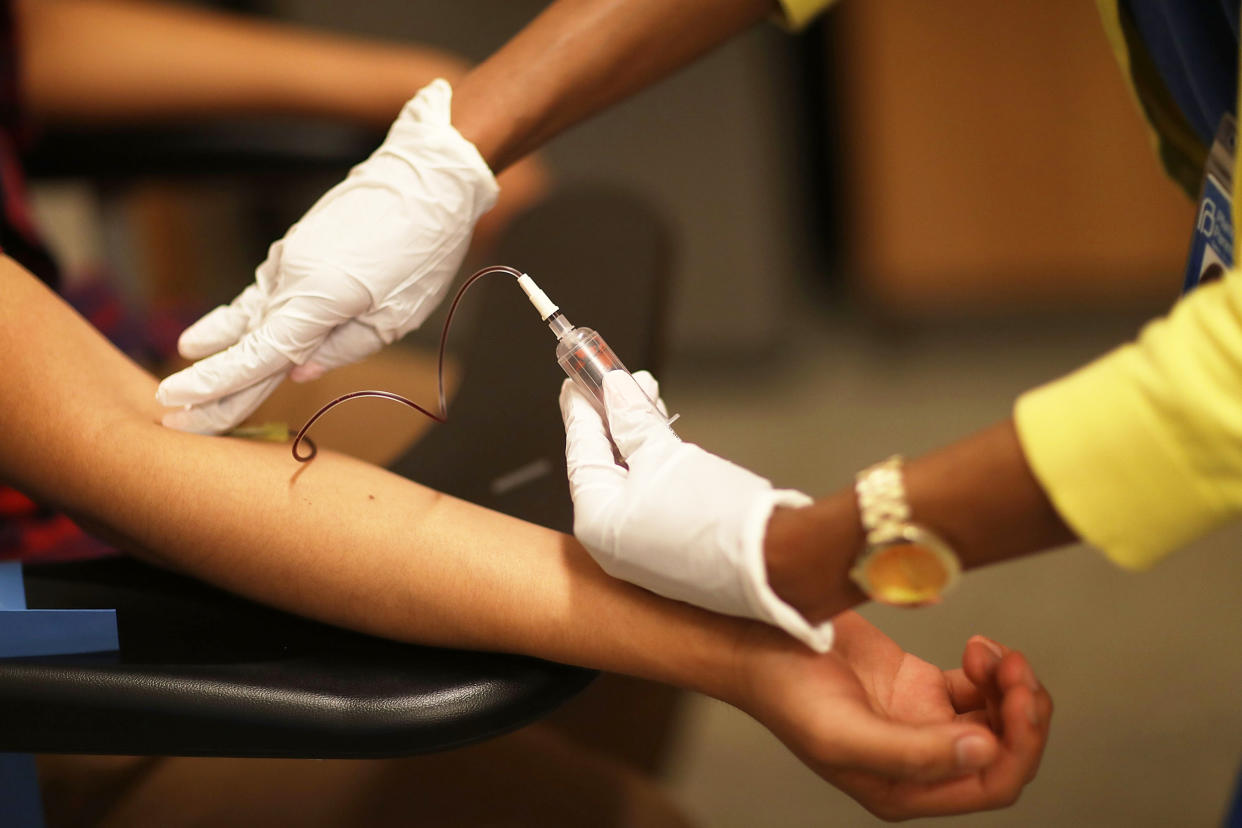STI cases surged in 2021, but new report shows only a 'small slice of the pie'
Sexually transmitted infections rose again in 2021, after a slight dip during the first year of the coronavirus pandemic, according to a report released Tuesday by the Centers for Disease Control and Prevention.
Combined cases of chlamydia, gonorrhea and syphilis rose 6% in 2021, reaching a total of more than 2.53 million reported cases and nearing the pre-pandemic high of 2.55 million. In 2020, there were about 2.39 million cases.
Syphilis increased the most, 32%, from nearly 134,000 cases in 2020 to nearly 177,000 in 2021. Chlamydia cases rose about 4% in 2021, reaching 1.64 million; gonorrhea cases also rose about 4% that year, to 710,000.

While STIs are common throughout the U.S. and among all groups, some populations have higher rates than others. The 2021 report found that STIs “continue to disproportionately affect gay and bisexual men and younger people,” as well as Black Americans and American Indian/Alaska Natives.
“This 2021 surveillance report really shows that STIs show no sign of slowing down,” said Dr. Leandro Mena, the director of the CDC’s Division of STD Prevention.
But the report does not look at all STIs, leaving out other infections, such as HPV, HIV and trichomonas, a parasite that caused an estimated 2.6 million infections in 2018, according to CDC data. (Chlamydia, gonorrhea and syphilis are “reportable” STIs — meaning providers must report cases to health departments. HIV is also reportable but covered in its own report.)
“This is really only showing you a very small slice of the pie in terms of what’s going on with STIs in the United States,” Dr. Ina Park, a professor of family and community medicine at the University of California, San Francisco, said of the new report.
Chlamydia screenings fall; syphilis cases soar
The dip in overall STI cases in 2020 was due to fewer cases of chlamydia that year, according to the new report. Although cases increased in 2021, they have not yet reached their pre-pandemic levels.
Park said that count most likely reflects lower screening levels.
“It reflects folks’ not routinely screening for chlamydia,” she said. “Chlamydia, especially in women, is almost always asymptomatic.”
The steep rise in syphilis cases was the most disturbing aspect of the report, Park said.
The infection — which can be easily treated with antibiotics — had fallen to a low of around 31,000 cases in 2000, and it has surged nearly sixfold, to nearly 177,000 cases in 2021. The last time syphilis cases exceeded that number was in 1950.
In babies born to mothers with syphilis, the illness can be deadly.
“It’s really a preventable tragedy,” she said. “We need to have a robust public health response to in particular congenital syphilis, because there’s no reason why a baby should die of congenital syphilis in 2023.”
How can STIs be slowed?
Experts point to decreasing condom use, lack of access to health care and a rise in substance abuse as some of the factors driving increasing rates of STIs.
David Harvey, the executive director of the National Coalition of STD Directors, said that without a concerted effort, the rise will continue.
“With no new federal investments in STI prevention and a lack of federal leadership, these rates will continue to rise,” he said. His organization is calling for additional funding — more than $300 million — for the CDC’s Division of STD Prevention.
“We are calling for dramatic action by the Biden administration,” he said. “We want to see a national strategy and funding to ramp up STI testing and treatment, and we want to see the state and local public health workforce support it.”
Mena, of the CDC, pointed to the need to reduce stigma around testing for STIs and to increase access to testing. He also noted that recent data suggests that for high-risk groups, including men who have sex with men, taking the antibiotic doxycycline after sex can reduce the risk of infection.
Follow NBC HEALTH on Twitter & Facebook.
